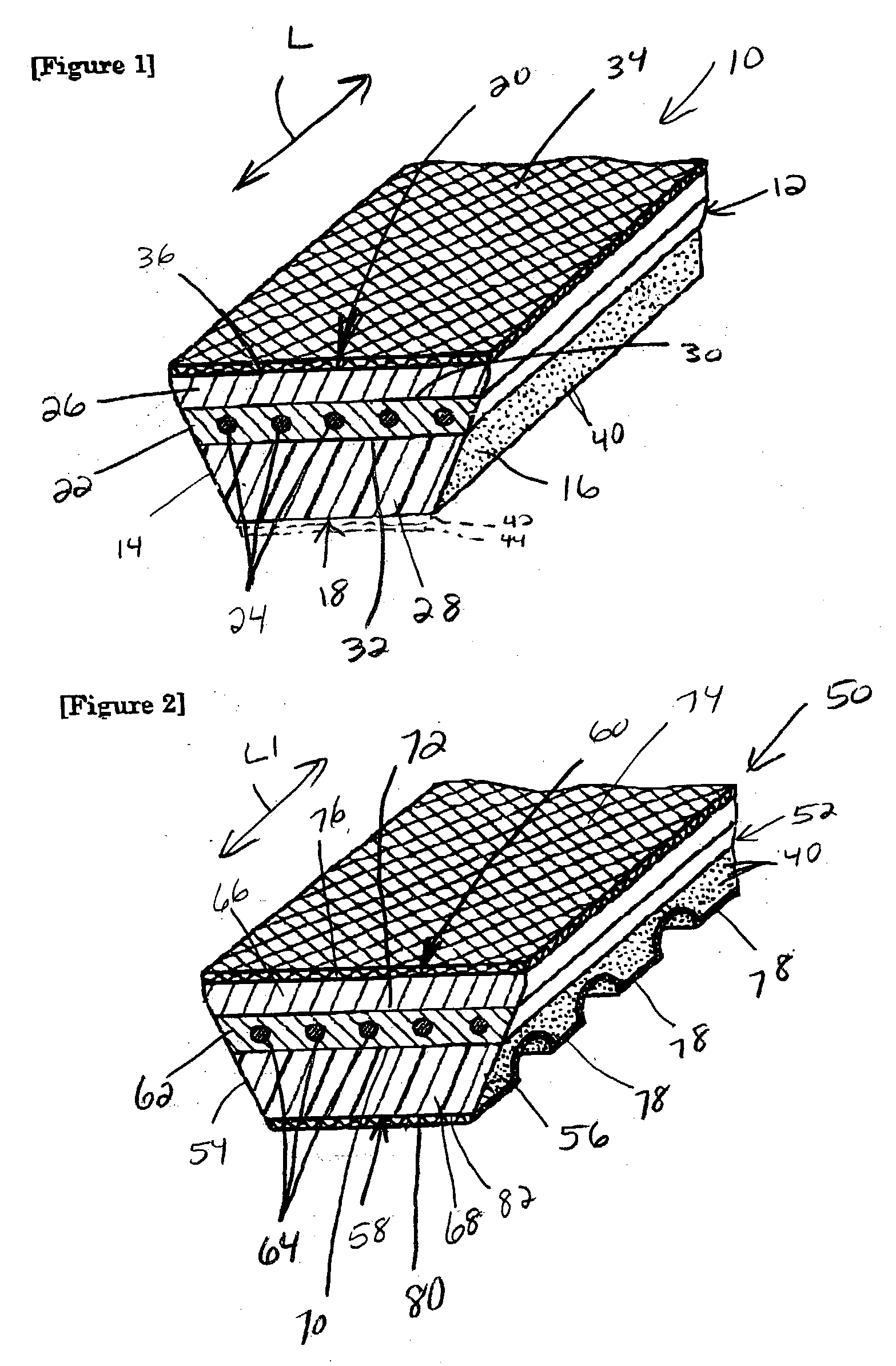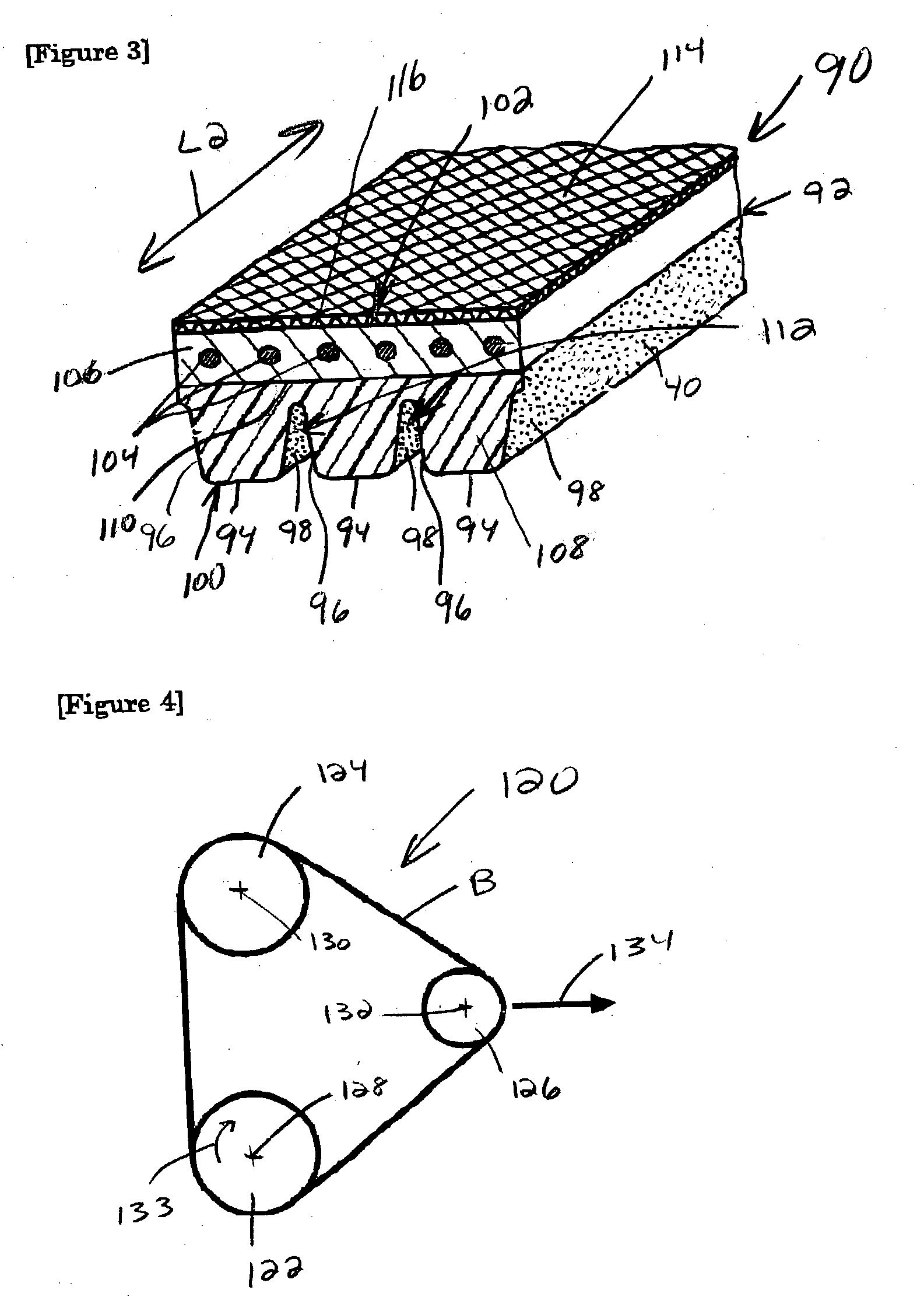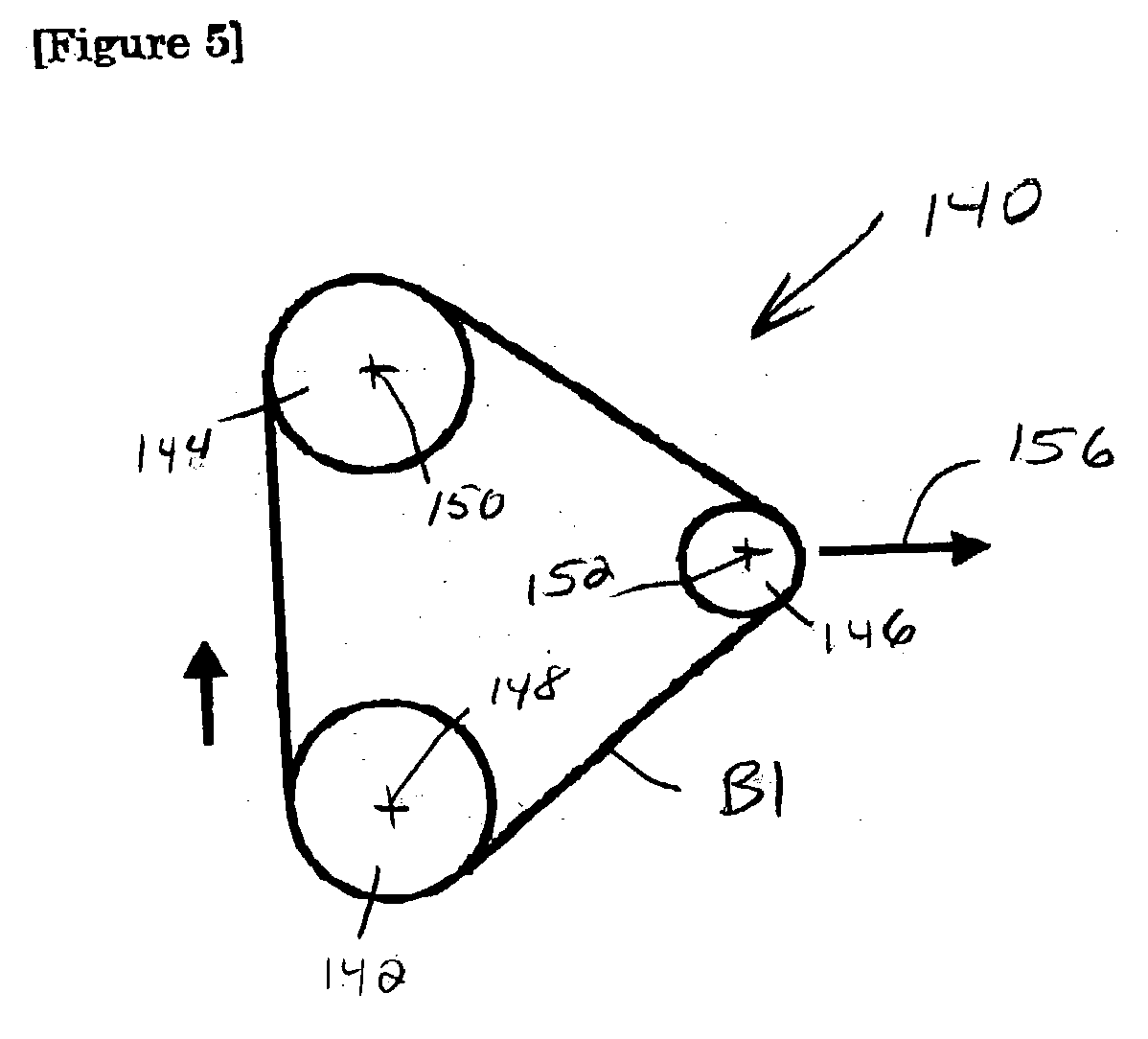Power transmission belt
a transmission belt and power technology, applied in the field of power transmission belts, can solve the problems of insufficient abrasion resistance, 40 may not be uniformly distributed, and make the processing of rubber composition difficul
- Summary
- Abstract
- Description
- Claims
- Application Information
AI Technical Summary
Problems solved by technology
Method used
Image
Examples
Embodiment Construction
and Comparative Examples 1-3 were prepared to carry out comparative testing.
[0057] Poly-p-phenylene benzobisoxazole fiber was made from a product manufactured by Toyobo, and sold commercially under the trademark ZYLON.TM.. The ZYLON.TM. fiber was an HM grade material and cut to lengths of 3 mm. The fiber diameter was 1.7 dtex.
[0058] p-Aramid fibers were made from filaments manufactured by Teijin-Twaron, and sold commercially under the trademark TWARON.TM.. Filaments, from which the fibers were cut, had a size of 1,670 dtex / 1,000 filaments. The fibers were dipped in an RFL solution, as shown in Table 1, below, and processed at 200.degree. C. for one minute.
1 TABLE 1 Compounded Substances Parts by Mass Vinylpyridine latex (40%) 244.0 Resorcinol 11.0 37% Formalin 16.2 Sodium hydroxide 0.3 Water 299.5
[0059] The processed filaments were cut to produce fibers having a length of 3 mm and a diameter of 1.7 dtex. Rubber compositions, as shown in Table 1, were combined with the resulting shor...
PUM
| Property | Measurement | Unit |
|---|---|---|
| length | aaaaa | aaaaa |
| lengths | aaaaa | aaaaa |
| length | aaaaa | aaaaa |
Abstract
Description
Claims
Application Information
 Login to View More
Login to View More - R&D
- Intellectual Property
- Life Sciences
- Materials
- Tech Scout
- Unparalleled Data Quality
- Higher Quality Content
- 60% Fewer Hallucinations
Browse by: Latest US Patents, China's latest patents, Technical Efficacy Thesaurus, Application Domain, Technology Topic, Popular Technical Reports.
© 2025 PatSnap. All rights reserved.Legal|Privacy policy|Modern Slavery Act Transparency Statement|Sitemap|About US| Contact US: help@patsnap.com



